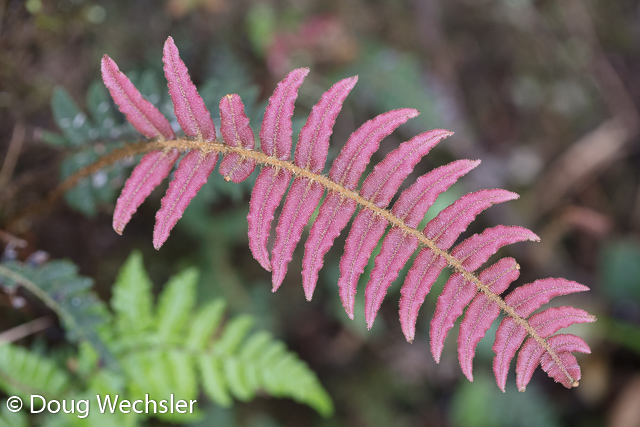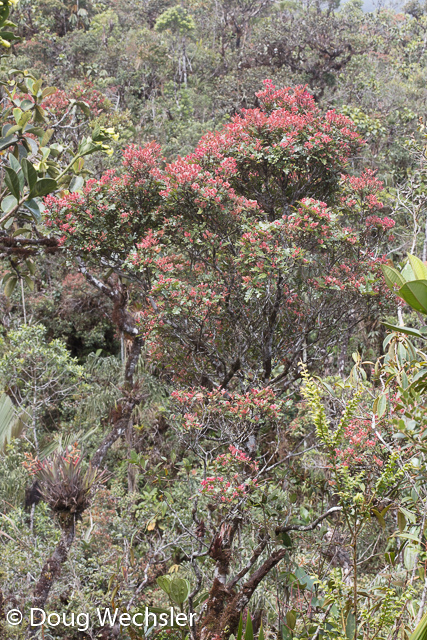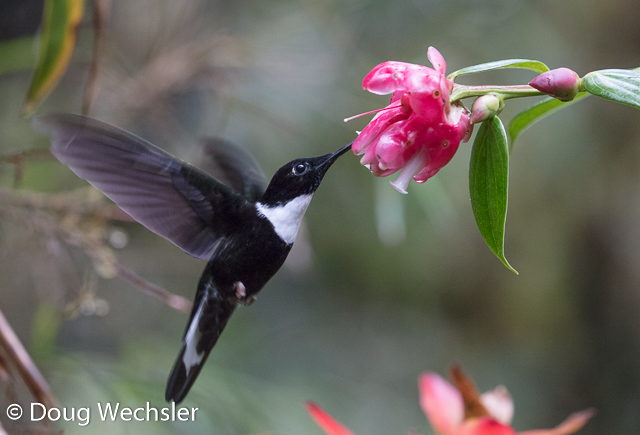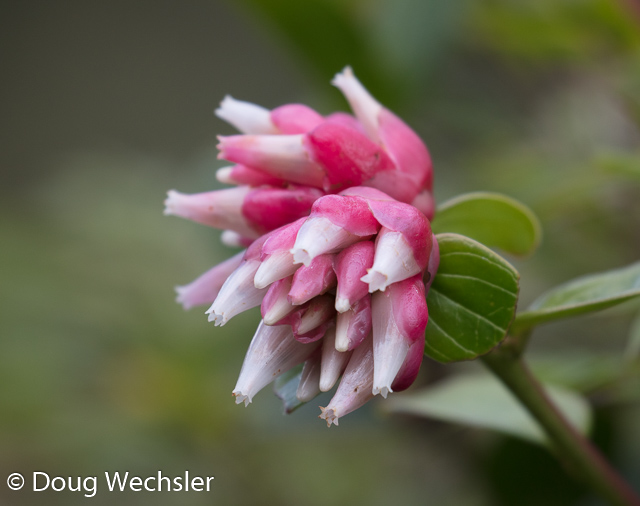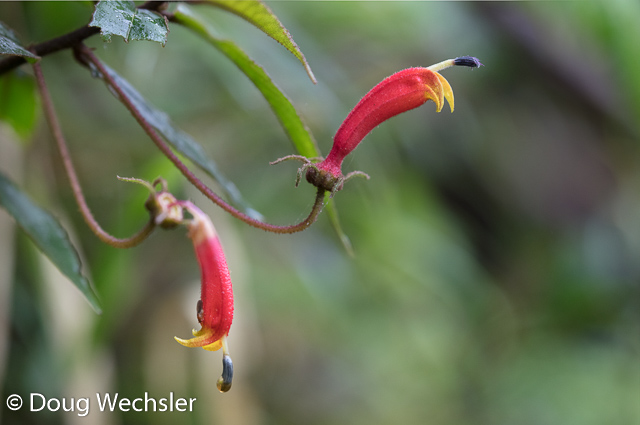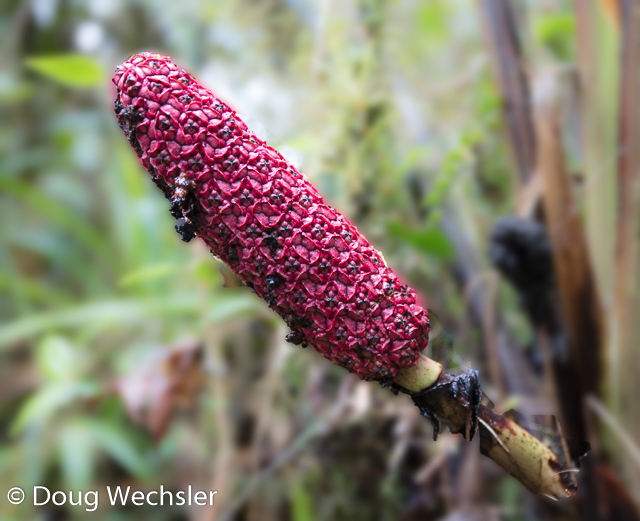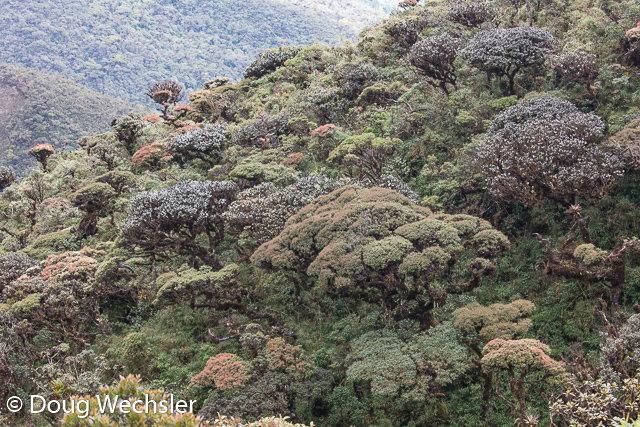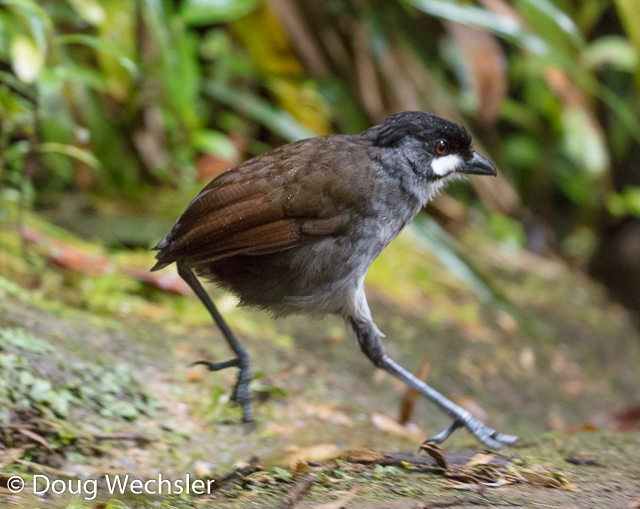Take a look around the cloud forest and you will notice a lot of red accents in the dark green world. Here you can see a few of those red eye-poppers from Tapichalaca Reserve in southern Ecuador.
Young leaves often start out without chlorophyll and, in the case of red leaves, with an abundance of anthocyanins. The reason is unclear. Do red pigments provide UV protection for the leaves? Do they inhibit fungi? Are red leaves less recognizable to insect grazers looking for tasty young leaves to devour? The scientific jury is still out on this.
While the reason so many young leaves are red remains a mystery, it is obvious why so many flowers are. In one word: hummingbirds. These energetic pollinators are particularly diverse in the Andes. Like most birds, their vision is sensitive in the red area of the spectrum. Plants have co-evolved with them, to take advantage of the hummingbirds’ visual strengths.
A few of the many red flowers of the cloud forest:
The same goes for fruit. It is often red to take advantage of birds’ visual sensitivity to red.
A few miles north of Tapichalaca, I recently visited a cloud forest just below treeline. Notice all the reddish leaves.
Hey, what’s this brown bird doing in this red post?
I couldn’t mention Tapichalaca Reserve without mentioning the bird that is responsible for saving it. It was the discovery of the Jocotoco Antpitta that led to the creation of this beautiful reserve and eleven others.



